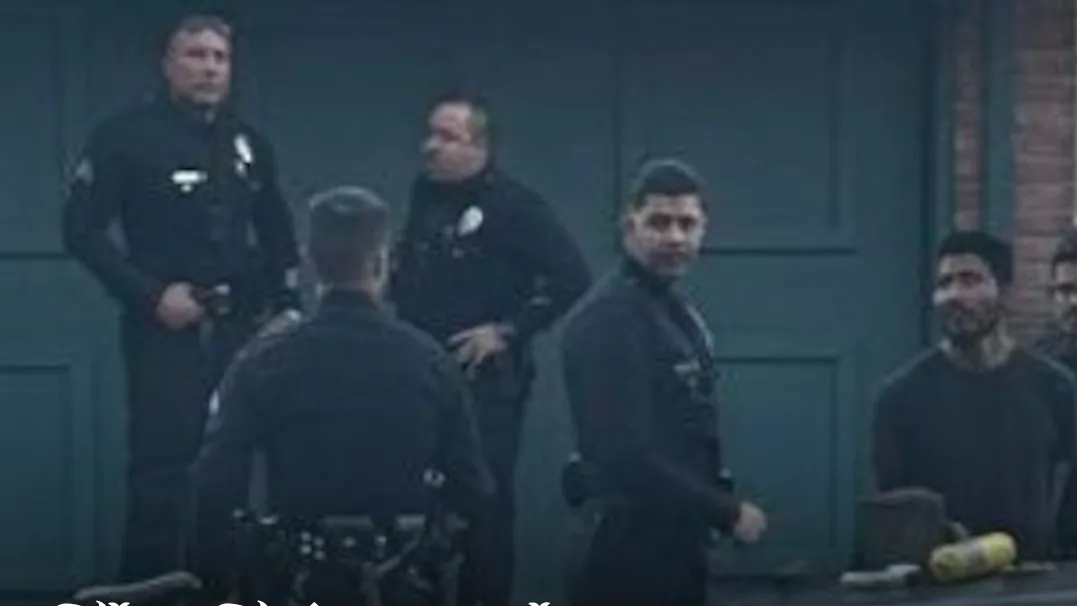A homeless man suspected of attempting to start a fire with a “flamethrower” was bundled to the ground and zip-tied by Angelenos as wildfires continued to spread.
Residents in the West Hills region of the city performed the citizen’s arrest after reportedly witnessing the man brandishing a “large propane tank or flamethrower” on Thursday.
“We really banded together as a group,” Renata Grinshpun told KLTA 5 TV channel. “A few gentlemen surrounded him and got him on his knees.”
Dominic Choi, LA police’s assistant chief, said on Friday that the suspect was interviewed but authorities deemed that there was “not enough probable cause” to charge the man.
However, the suspect was arrested on a felony probation violation and the investigation remains ongoing.
The intervention from the public came soon after and near to where the Kenneth fire broke out on Thursday afternoon.

“What we know right now is that the incident occurred here and about 20-30 minutes later, a suspect was detained by citizens,” Sean Dinse, from the Los Angeles Police Department’s Topanga Division, told US media, adding that the man was arrested five miles from where the fire is believed to have started.
When asked whether the Kenneth fire was started deliberately, Mr Dinse said: “At this time, that’s what we believe. It’s being investigated as a crime.”
Witnesses said the man was riding a bicycle and trying to set fire to garbage cans and discarded Christmas trees, a Los Angeles Fox affiliate said.
It was then that the concerned residents saw the man and chased him down.

Ms Grinshpun told KTLA: “We were sitting in the backyard and suddenly, we hear a car come to a screeching halt, and the guy is running out saying, ‘Stop! Drop what you’re holding! Neighbours, he’s trying to start a fire! Call 911!’
“He was very, like, ‘I can’t stop. I can’t stop. I’m not putting this down. I’m doing this,’” another witness said, according to the station. “And very focused on moving forward with the blow torch. And we’re like, ‘We can’t be doing that right now’.”
Ms Grinshpun said the locals all banded together as a group. She said: “A few gentlemen surrounded him and got him on his knees. They got some zip ties, a rope, and we were able to do a citizen’s arrest.”
The incident occurred around five miles from the start of the Kenneth fire.
By 7pm on Friday, the fire had burned through more than 1,000 acres and had reached 35 per cent containment.
The fires started on Tuesday morning when a small bush fire started up on the ridgeline of the Santa Monica Mountains, which border the Palisades on one side and the Pacific Ocean on the other.
Within minutes the fire had rapidly progressed to another ridgeline, with large flames and plumes visible from the nearby residential neighbourhoods.
Self-ordered evacuations rapidly began – even before California’s fire department had put out a statement – with hundreds of residents fleeing in cars, causing traffic chaos on Sunset Boulevard.
Within hours the fire had spread dramatically. Some 1,200 acres were burning by the evening and 16,000 by the morning. To put this into perspective, this is around the same size as the city of Wolverhampton.
The problem – for firefighters already facing the prospect of waterless fire hydrants – was that another fire had broken out just hours later.
The fire in Pasadena, known as the Eaton fire, popped up at around 6pm on Tuesday and rapidly tore through hundreds of acres in north Los Angeles, around 30 miles from the original blaze.
The Hurst fire, a separate third, smaller blaze also started on Tuesday.

Both the Palisades and Eaton fires grew exponentially within hours of beginning, thanks to strong Santa Ana winds and dry vegetation in the midst of a drought.
Santa Ana windstorms happen regularly in southern California – but the winds are stronger than usual, reaching up to 100mph.
High pressure systems form over the deserts of the Great Basin. This pressure circulates clockwise, pushing winds toward the coast.
As they move towards the coast, winds pick up speed and the air gets hotter and drier.
All of a sudden, dry, hot air is speeding towards the coast.
2023 saw a lot of rain in parts of California, creating the conditions for new vegetation to grow.
However, LA has experienced a dry spell in recent months and dry hot air meeting dry vegetation creates tinderbox conditions.
The combination of hot air and dry land contributed to the rapid spread of the fires. By Wednesday morning, four separate fires were burning.
Later that evening, 17,000 acres of land had been scorched in the Palisades fire and nearly 14,000 in the Eaton fire. Three smaller fires – Lidia, Sunset and Woodley – had also begun.
It was already one of the most destructive in LA’s history.
Livelihoods were lost in an instant and thousands of homes – belonging to celebrities and regular residents alike – were destroyed.
More than 100,000 residents, powerless to the flames engulfing their homes, had fled. What was left were biblical, apocalyptic scenes.
The two major fires, Eaton and Palisades, remained 0 per cent contained by Thursday morning. It was not clear just how vast the devastation was going to be.

Famous Hollywood landmarks were now also at risk as flames spread through the Hollywood hills, near the Walk of Fame.
As anger started to mount with the state’s authorities, Gavin Newsom, the governor of California, said he expected firefighters to “make a lot of progress” on Friday.
Local leaders have faced sharp criticism for their handling of the fires, some of it coming from Right-wing sources.
Mr Newsom said: “We’ve got to deal with this misinformation.
“People want to divide this country and we’re going to have to address this as well.”



